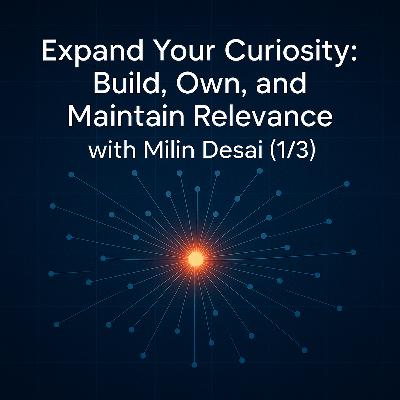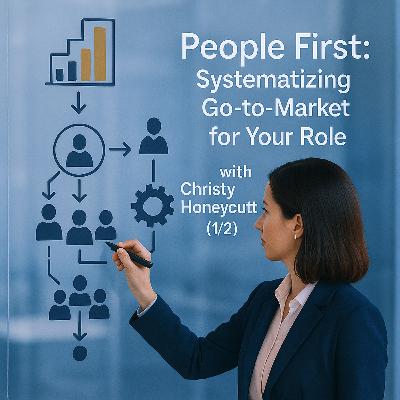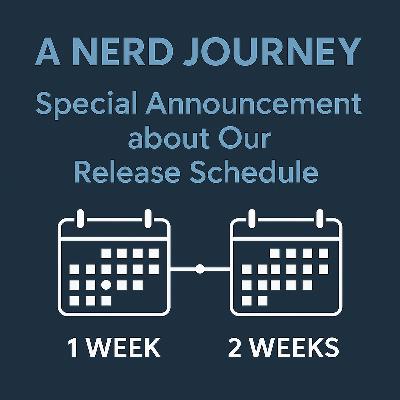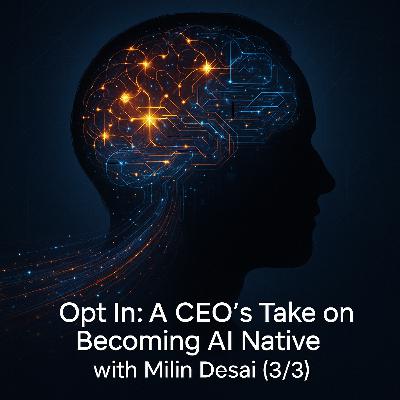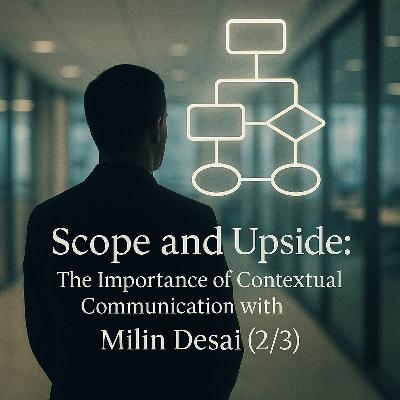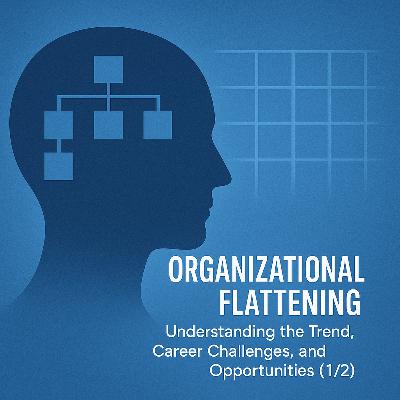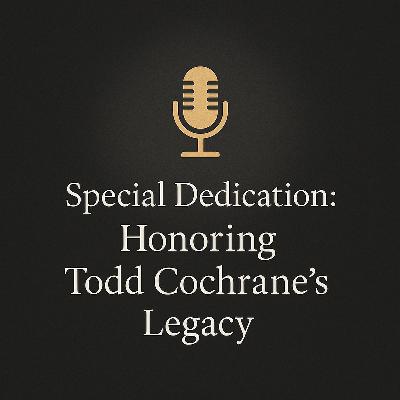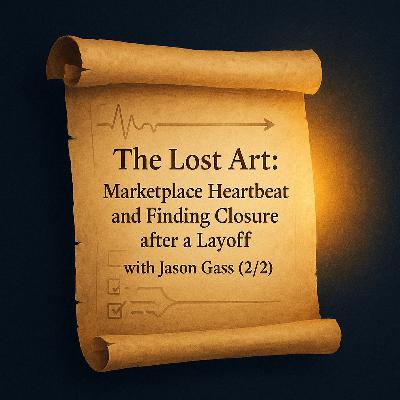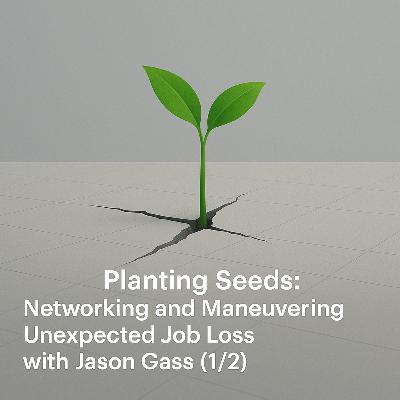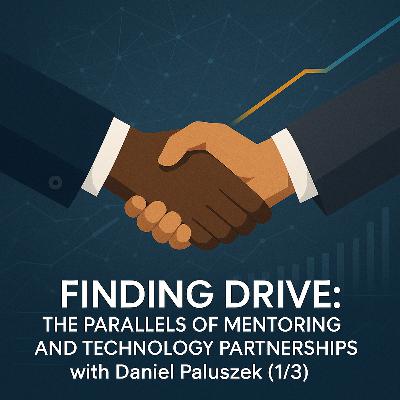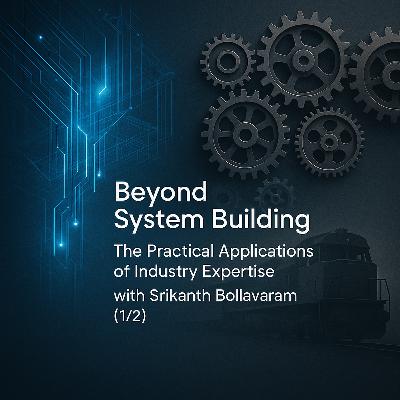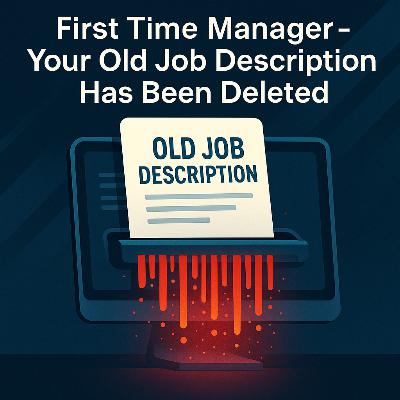Expand Your Curiosity: Build, Own, and Maintain Relevance with Milin Desai (1/3)
Description
How curious do you think you are at work? Take a second to rate yourself. After today’s conversation with guest Milin Desai, you’re going to want to dial that curiosity up a notch.
Milin is currently the CEO of Sentry, and one of the keys to his success from the very beginning was allowing the scope of his curiosity to expand over time…beyond specific projects and even beyond his job role. Perhaps without realizing it, Milin was doing the work to build and maintain professional relevance.
Listen closely in episode 349 as we follow Milin from his early days as a computer science student through roles as a QA tester and software developer all the way into technical marketing. You’ll hear advice for expanding your own curiosity inside your current company, ways you can provide value to a mentor, and an empathetic approach to customer conversations that can help you build relevance and develop a strong reputation.
Original Recording Date: 09-29-2025
Topics – Meet Milin Desai, A Unique Trait, Internships and Job Interviews, Curiosity and the Importance of Control, Mentorship as a Stream of Active Conversations, Beyond the Scope, Becoming Relevant in Something Different
2:40 – Meet Milin Desai
- Milin Desai is currently the CEO of Sentry.
- Sentry helps teams find where code is broken in production and helps them fix it fast, and with AI, fixing it faster is greatly accelerated.
3:15 – A Unique Trait
- Around 7th or 8th grade Milin recognized how much he enjoyed math and science in school. Milin had an affinity for STEM (Science, Technology, Engineering, and Mathematics).
- Milin cites his dad, a mechanical and electrical engineer, as a big influence. Going into 10th grade, Milin thought he would pursue mechanical engineering.
- Milin’s cousin Rajiv (who had worked for NASA) would come visit and began showing Milin some of the work he was doing. This is the point at which “everything changed” for Milin, and he decided to pursue computer engineering / computer science.
- Milin also tells us he built hundreds of websites in India during the time of dial up modems.
- Milin pursued an undergraduate degree at a school in Mumbai, but his family knew he wanted to come to the United States.
- Milin came to the United States in 1999 and attended USC (University of Southern California) to purse a master’s degree.
- The potential for opportunity and the vastness of the United States captivated Milin.
- Did Milin ever ask Rajiv what he should study, or did he naturally gravitate toward those areas?
- Rajiv would have conversations with Milina and show him the work he was doing.
- Milin started working for Rajiv while pursuing his undergraduate degree. He was building websites for companies in India.
- The building of the websites was interesting to Milin, but he was also doing the selling part. Milin had to make a pitch to companies explaining what a website could do for them, share the price, and collect the check if they said yes.
- “Not only did he influence me in kind of figuring out…this is where the opportunity is and inspire me…but he also went on to tell me that I have a unique trait where I can talk business tech selling, and I know the technology part. And I can bridge the two worlds. He was one of the early people to recommend that in the long run I may want to think about the business side or…the entrepreneurship side of things when it comes to tech, not just the programming or the systems side of things. And he in fact felt my combo made me more relevant…in that lane versus just staying a programmer.” – Milin Desai
- Rajiv gave Milin these cues early on in addition to inspiring him to do the work.
- As people who work in sales engineering today, John and Nick agree that the combination of technology and business value is very valuable.
7:49 – Internships and Job Interviews
- Milin began working for Veritas after he finished his master’s program as an entry-level software engineer.
- Pursuing an advanced degree can give you the chance to pursue internships, and Milin had a family friend working at Veritas who introduced him to the hiring manager for a quality assurance (or QA) internship.
- After successfully getting the internship at Veritas, Milin was doing QA for software-defined storage volume management.
- Milin’s work during the internship led to a full-time offer from Veritas upon his graduation.
- “The first break is always hard, by the way, to get. I see it even to this day with folks coming out of school. Not everyone…lands in the perfect opportunity right away, and the dots need to be connected. I’ve been fortunate enough to have people open doors and open opportunities…. But I remember being rejected a lot.” – Milin Desai
- Milin tells us he struggled in job interviews as a new graduate. Many of his friends from school had multiple job offers from these conversations, and compared to them, Milin had much less success getting offers outside of the one from Veritas.
- From a timing perspective, this was around the time of the market crash following the events of September 11, 2001.
- “Even timing-wise, the difference between graduating with your master’s degree a year and a half versus 2 years. That six months made all the difference. A little luck, a little timing, and a lot of support.” – Milin Desai
- Did the degree program Milin pursued prepare students for job interviews at all?
- Milin tells us that a school doesn’t really prepare you for the conversation you have in an interview. While you do learn deep systems concepts in school, for example, the interview questions are often situational.
- “You definitely use those concepts, but you’re never in that setup until you go through that process. And I think interviewing is a little bit of an art form. Some folks are really good at it, and some folks even study it. There is some element of that. But I think the school prepares you with fundamentals. It doesn’t necessarily prepare you for that interview per se, and you have to kind of connect the dots…. You can prepare for it. Some people are just naturally good at it, and some people like me just suck at it.” – Milin Desai
- Milin feels interviewing is sort of an art form. You can work to prepare yourself
- Milin tells us that a school doesn’t really prepare you for the conversation you have in an interview. While you do learn deep systems concepts in school, for example, the interview questions are often situational.
- Did Milin think of interviews as somewhat similar to pitching a company on a website?
- The selling part is easy according to Milin. In this motion you are telling a story, bringing a problem statement, and delivering value. It’s less about solving some kind of algorithm but rather trying to figure out if what you have to offer will address someone’s pain point.
- Milin emphasizes the storytelling element of the sales process and the collaborative problem solving you’re doing with someone. It’s more of a conversation.
- Selling is not about getting into an extreme level of detail like a technical interview can be. Someone could easily make a mistake in a technical interview when describing a specific step in the process and get off track. People can feel a great deal of pressure when in a job interview.
- Milin feels job interviews are much more difficult than a business conversation. The latter is about human connection and building rapport with the other person.
- Milin tells us his interview style is more about building human connections than testing the limits of a person’s technical depth.
- John mentions the difficulty in choosing a technical interview style that is well suited for effectively evaluating multiple job candidates. Does having a portfolio of code that is applicable to the role help with this?
- John also brings up LeetCode style interviews if you’d like to read more about them.
- Milin says quickly assessing a fit can be a challenge. It can be a combination of skills and experiences with other things layered on top.
- Milin says the first interview might be more focused on solving some basic elements. But it’s helpful if a candidate can talk about and contextualize other work they have done (like working on an open-source project, for example).
- "But to get in, there has to be a common baseline, a language, a form…. " – Milin Desai, on early round interviews
- If interviews are challenging for you as they have been for Milin, you have to work through them over time.
- “In the later stages what I would tell you is what is most attractive is people who have been from what I call 0 to 1 project where they start something are through the end. The end is not shipping actually. Shipping is just an intermediate point. End is adoption and the scaling and all of those elements. And to be through that journey 1, 2, 3 times is interesting to almost every organization out there…because through that you learn a sense of people, ownership, outcomes.” – Milin Desai
- Early on the baseline is some kind of entry test. When looking for people with more experience, interviewers will ask about projects people have written about on their resume or elsewhere and how they solved problems within those projects. At this point, the portfolio becomes more interesting and can help you get an opportunity.
- We emphasize the importance of a portfolio of projects and not just a portfolio of code.

